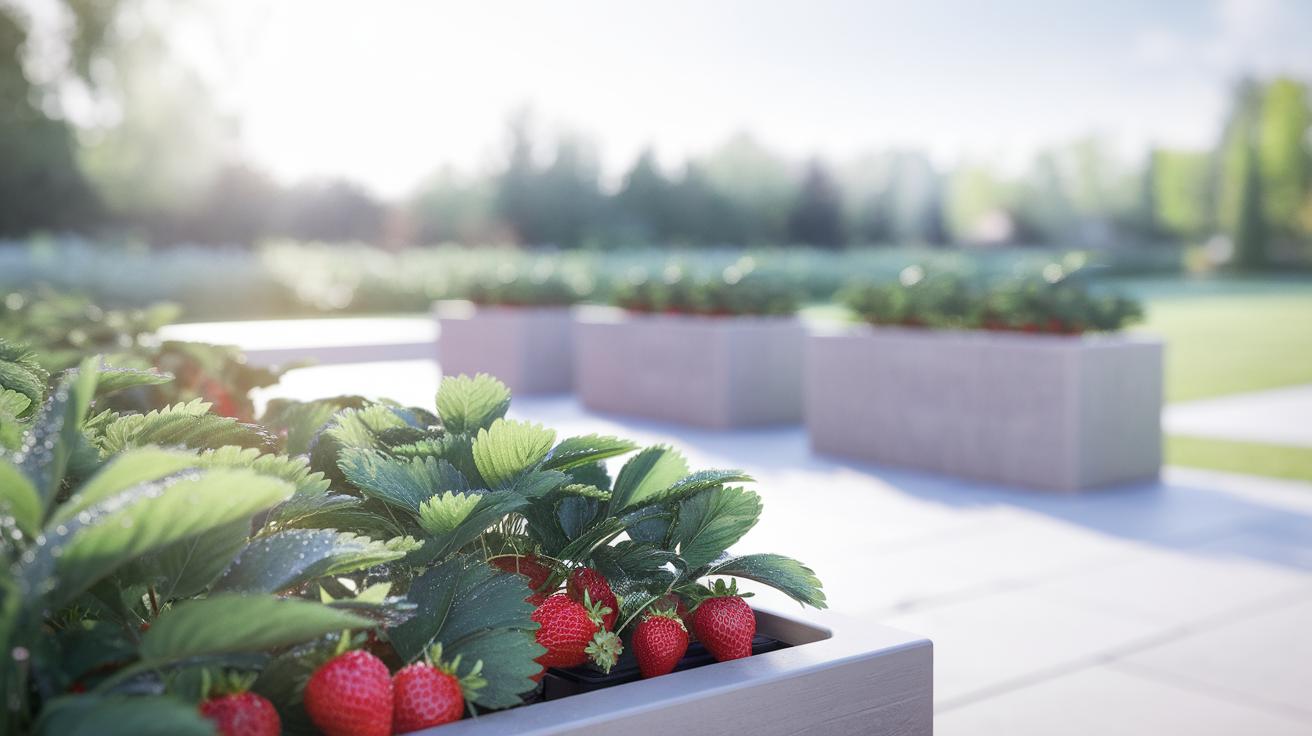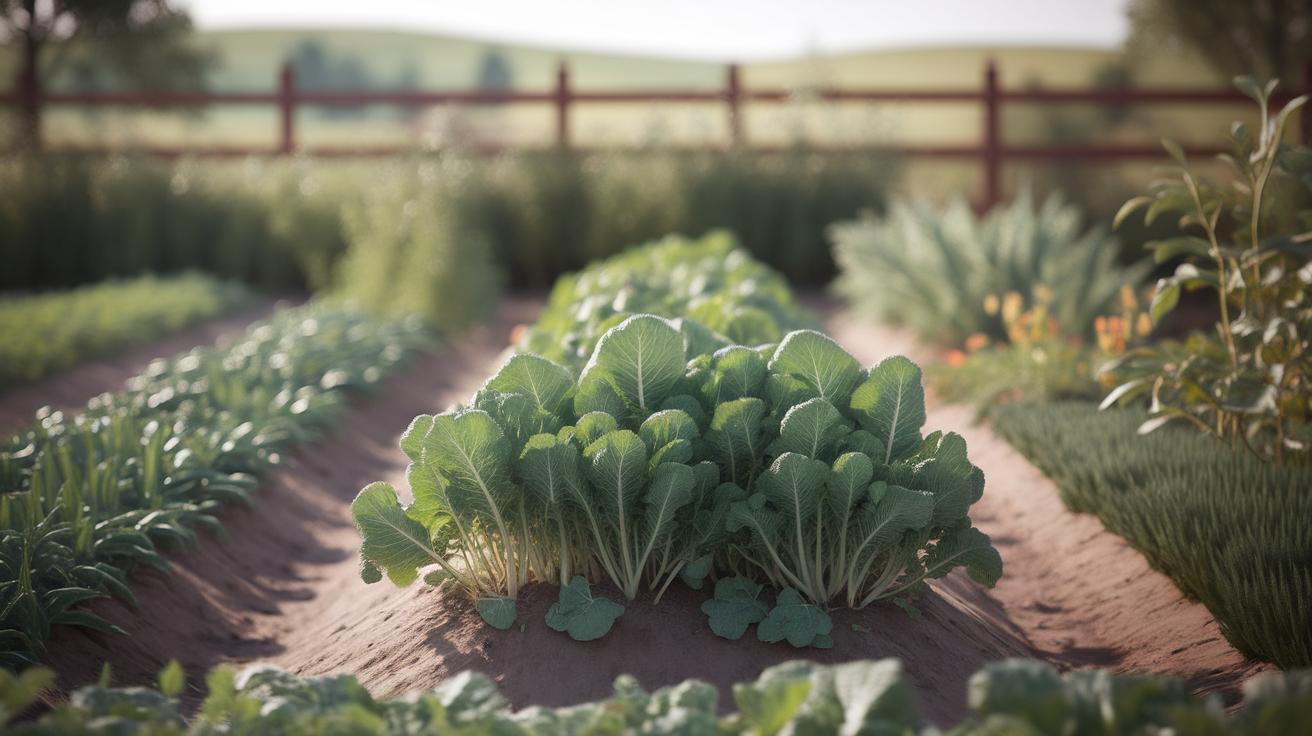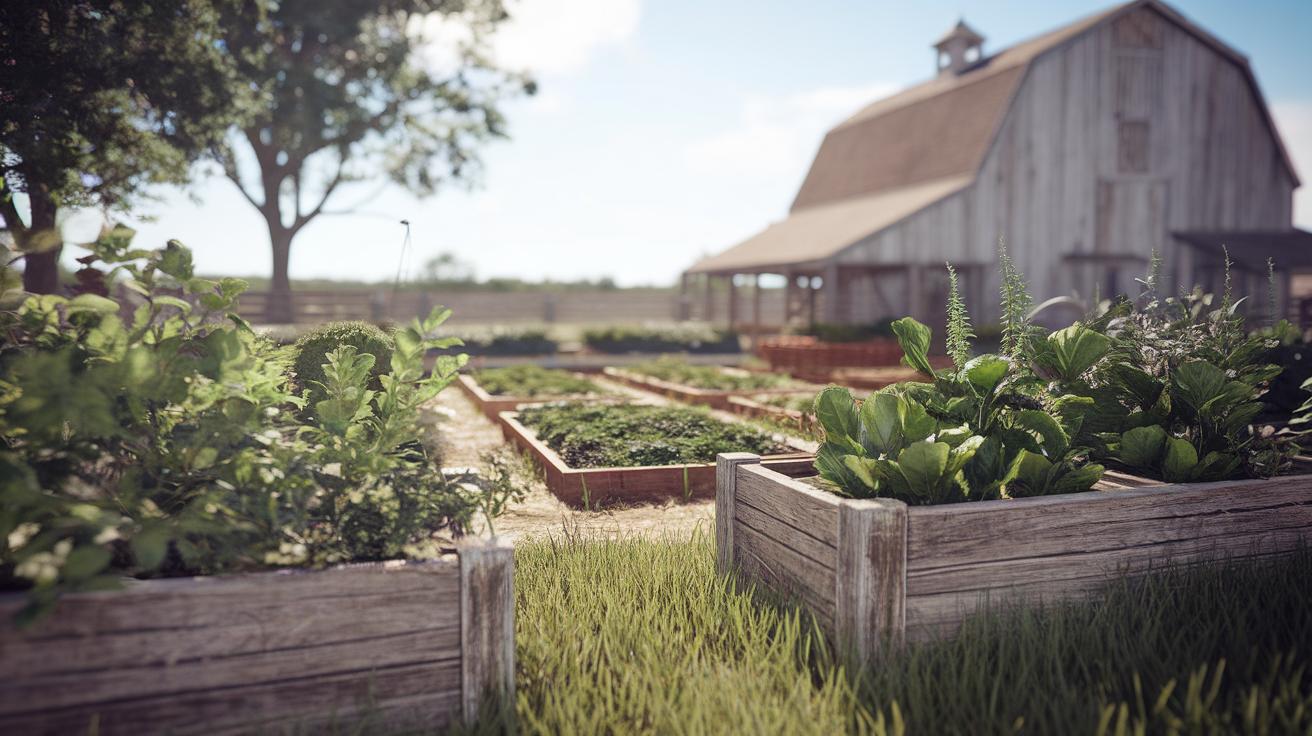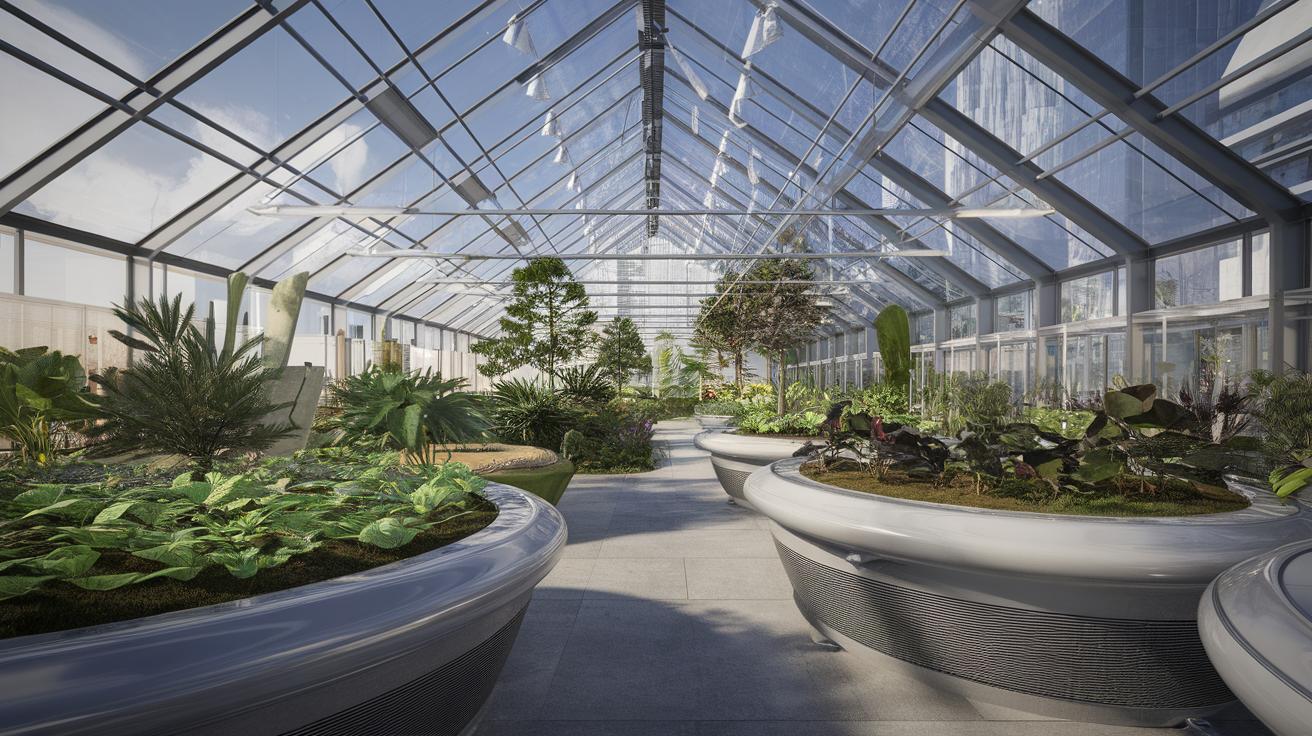Introduction
Strawberries are beloved for their sweetness, vibrant color, and versatility in various cuisines. Cultivating strawberries can be a rewarding endeavor, whether grown in home gardens, containers, or vertical planters. As gardening practices evolve, numerous creative approaches to strawberry planters have emerged. These inventive methods not only enhance the growth and yield of strawberries but also contribute to striking aesthetic features in outdoor and indoor spaces.
This article explores inventive strawberry planter ideas that cater to all gardening styles. From traditional raised beds to vertical gardening solutions and innovative container designs, we will delve into the best ways to cultivate luscious strawberries. With the right strategies and techniques, anyone can enjoy the fruitful benefits of strawberry gardening while adding a touch of charm to their green space.
Understanding Strawberry Growth Discussing Growth Cycles and Environmental Conditions for Thriving Strawberries
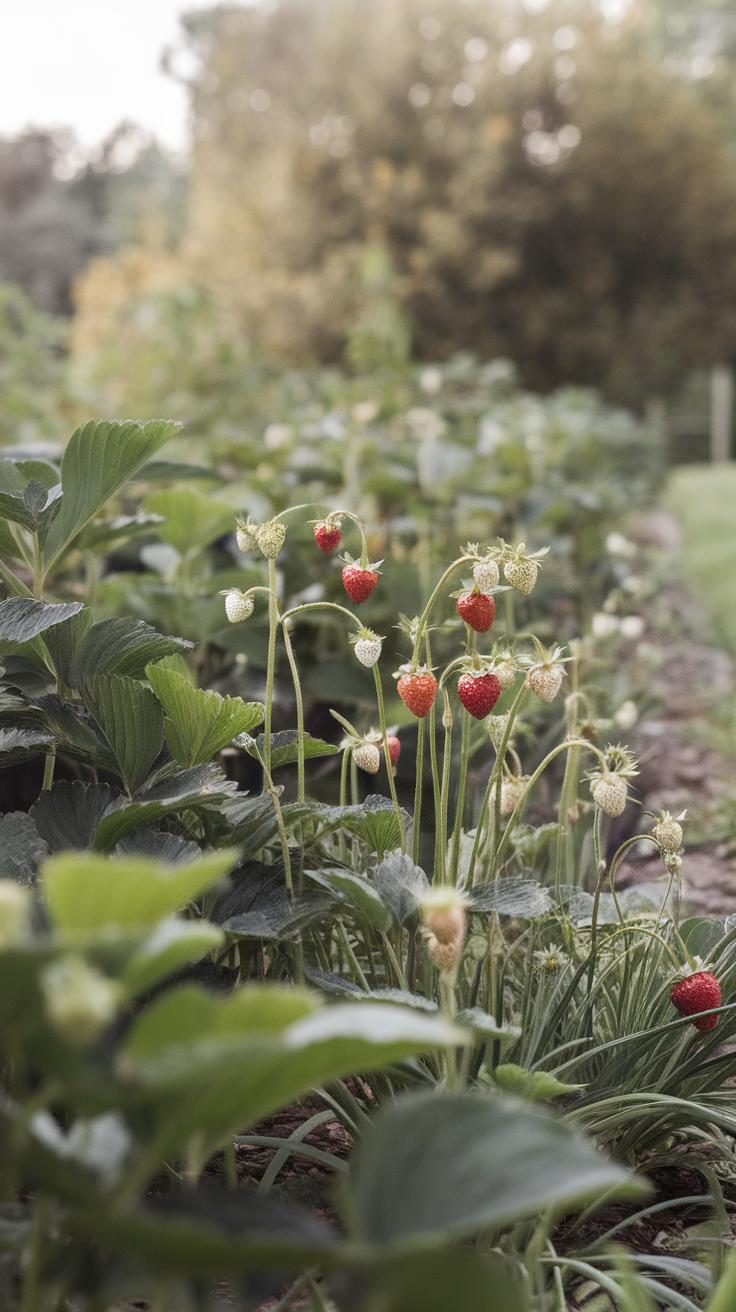
Strawberries follow a unique growth cycle that includes several distinct stages: germination, growth, flowering, and fruiting. Beginning in spring, seeds germinate and develop into seedlings. These young plants require optimal environmental conditions, including well-draining soil, consistent moisture, and full sunlight, to flourish. Ideal temperatures range from 60°F to 75°F, fostering healthy plant development.
During the growth stage, plants produce runners, which can root in the soil to create additional plants. This method of propagation allows gardeners to expand their strawberry patch effortlessly. Maintaining a stable environment by controlling humidity and temperature helps to prevent diseases and pests. Understanding these cycles and conditions will support the proper cultivation of strawberries, ensuring a fruitful harvest.
Raised Beds for Strawberries: The Advantages of Improved Soil Quality and Drainage
Utilizing raised beds for strawberry cultivation can provide numerous advantages that enhance overall plant health and productivity. One significant benefit lies in the control of soil quality. Raised beds allow for the incorporation of high-quality organic matter, ensuring that strawberries receive essential nutrients, which promotes robust growth and sweeter fruit.
Drainage is another crucial factor when growing strawberries. Raised beds facilitate better drainage, preventing waterlogging that can lead to root rot and other complications. This elevated structure keeps soil warmer in the spring and extends the growing season. Additionally, the ease of access when tending to plants reduces strain on the gardener, making raised beds not only practical but also highly effective for strawberry cultivation.
Raised Beds for Strawberries Boosting Growth with Quality Soil and Drainage
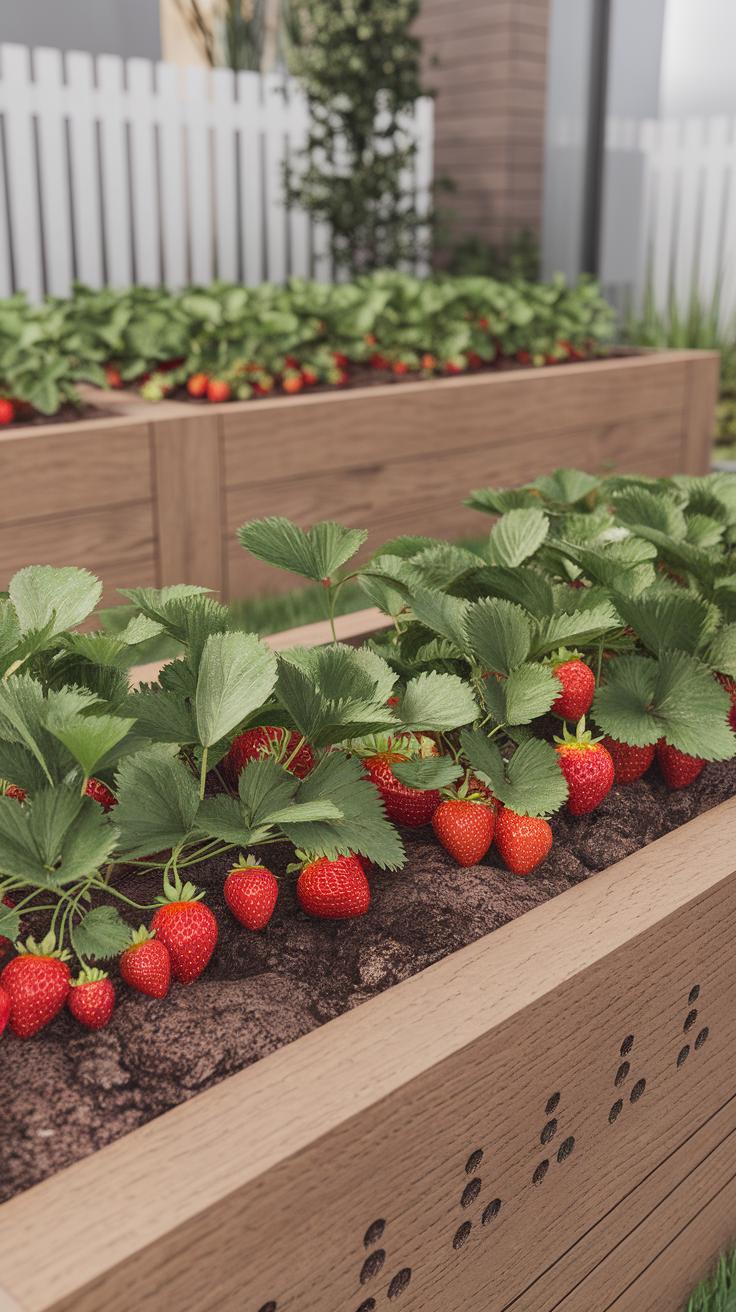
Enhancing Soil Quality and Health
Utilizing raised beds for strawberry cultivation brings a multitude of advantages, particularly concerning soil quality. Elevated beds allow gardeners to customize the growing medium, incorporating organic materials such as compost and peat moss to create an ideal environment for roots. This enriched soil not only promotes vigorous growth but also fosters higher nutrient availability, setting the stage for sweet, juicy strawberries. Furthermore, the controlled soil quality helps in managing pH levels and nutrient composition, essential for optimal plant health.
Promoting Excellent Drainage
Another significant benefit of raised beds is their natural drainage capabilities. Strawberries thrive when their roots are not waterlogged, as excess moisture can lead to root rot and other diseases. Raised beds prevent standing water, allowing for better air circulation and reducing fungal irritations that can afflict strawberry plants. By maintaining ideal moisture levels, gardeners can help ensure that strawberries grow vigorously and produce abundant fruit, making raised beds a smart choice for efficient and fruitful strawberry cultivation.
Container Gardening for Strawberries Unveiling Fresh Strawberry Planter Concepts
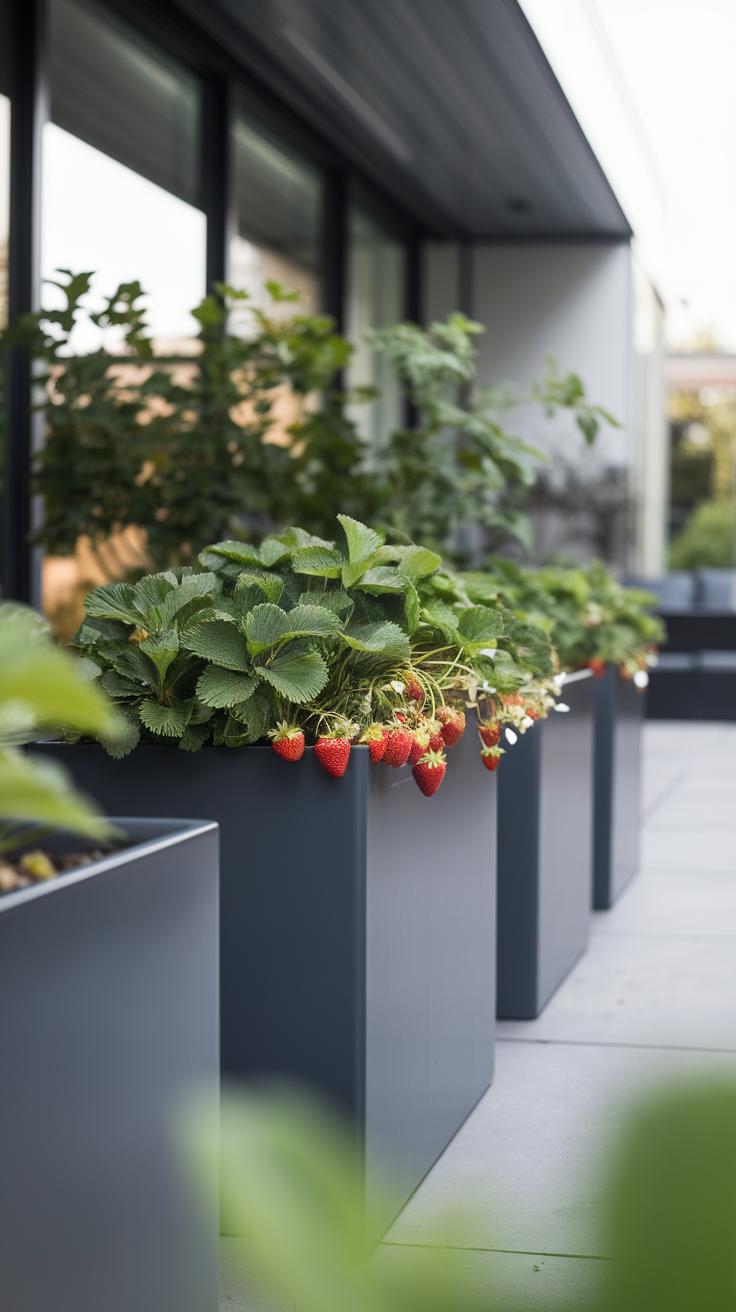
The Benefits of Growing Strawberries in Containers
Growing strawberries in containers presents a remarkable solution for gardening enthusiasts, especially for those with limited outdoor space. Utilizing pots or specially designed planter boxes allows for increased control over soil quality and moisture levels, essential for healthy strawberry growth. Containers can easily be moved to optimize sunlight exposure, ensuring that the plants receive the appropriate amount of light throughout the day.
Another significant advantage is the reduction in pest issues. Elevated off the ground, containerized strawberries are less accessible to common garden pests and may require fewer pesticide applications. This method also enhances drainage, preventing root rot and other issues associated with overly saturated soil. Ultimately, container gardening simplifies care and nurturing, making it an ideal choice for both novices and experienced gardeners aiming to cultivate delicious strawberries.
Vertical Gardening Techniques for Strawberry Planters
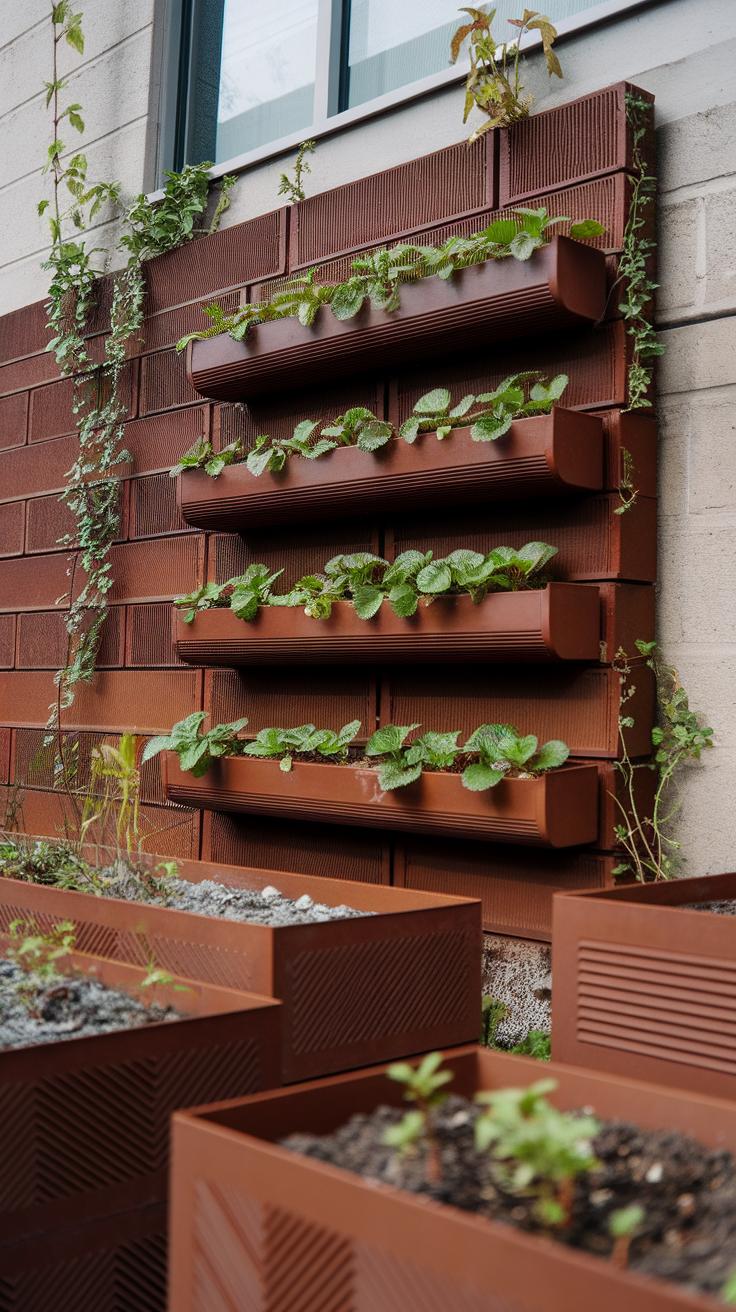
Creative Approaches to Cultivate Strawberries
Vertical gardening presents an ingenious method for nurturing strawberries in limited spaces. Different structures like trellises and wall-mounted planters can effectively transform small areas into lush strawberry gardens. Utilizing tiered systems enables growers to take advantage of vertical space, allowing multiple plants to flourish upwards rather than outwards. This not only maximizes the growing area but also enhances air circulation and sunlight exposure, essential for healthy plant growth.
Consider fabric pockets or stackable planter systems as innovative solutions for vertical cultivation. These features make maintenance simpler, offering easier access to fruits and foliage. Furthermore, vertical systems can minimize pest access, contributing to healthier strawberry production. Using recycled materials for these planters can also add an eco-friendly touch, blending sustainability with effective gardening practices. The outcome is a practical yet aesthetically pleasing way to enjoy fresh strawberries even in urban environments.
Hanging Strawberry Planters Innovative Options for Elevated Cultivation
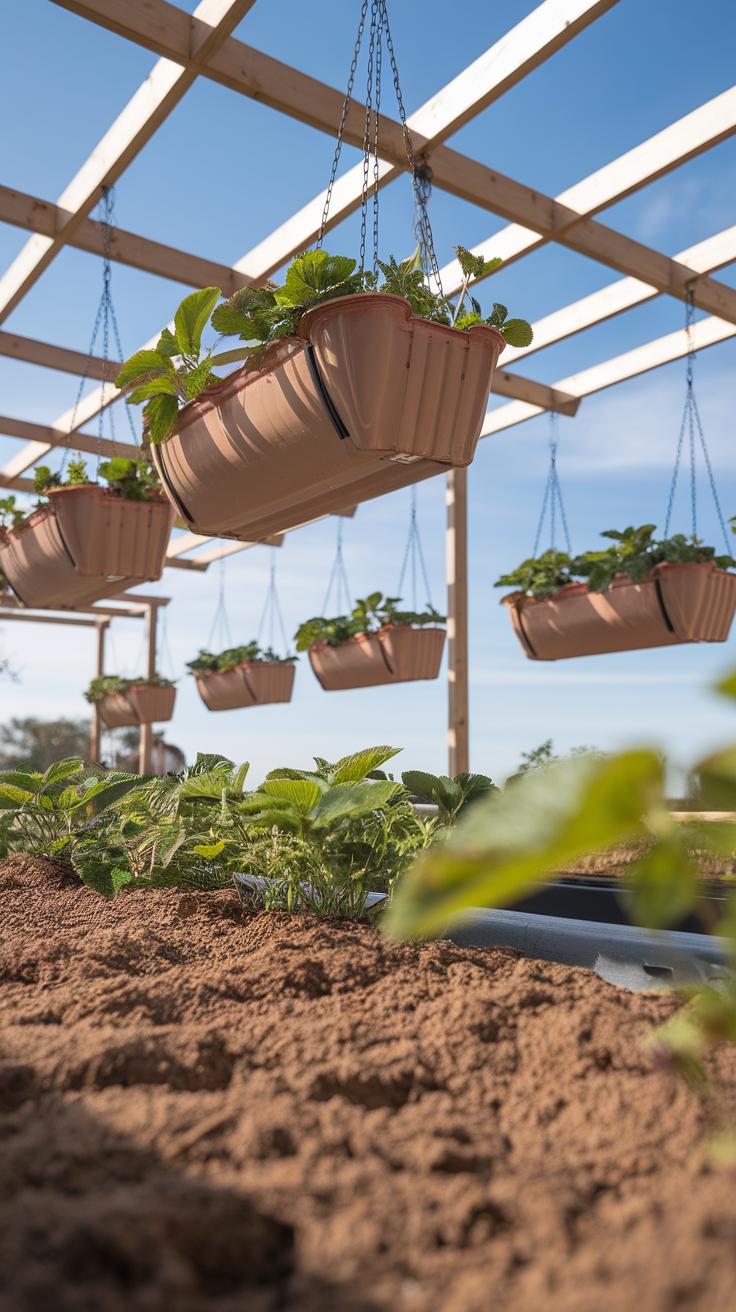
Practical Benefits of Hanging Planters
Choosing hanging strawberry planters can transform your gardening experience while maximizing space and aesthetics. These planters provide the perfect elevation for strawberries, promoting excellent air circulation and reducing the risk of pests and diseases that can plague ground-level gardens. Suspended planters are particularly beneficial in limited spaces like balconies or small yards, as they conserve valuable ground area.
Hanging planters can also be aesthetically pleasing, allowing for creative arrangements that beautify your outdoor or indoor spaces. Utilizing materials such as coco coir pots, metal baskets, or even recycled containers can add a unique touch to your garden. Moreover, watering becomes more manageable when planters are lifted off the ground; this ensures consistent hydration without the worry of weeds and soil saturation that often bog down traditional gardening methods.
Utilizing Wall Gardens for Efficient Strawberry Cultivation
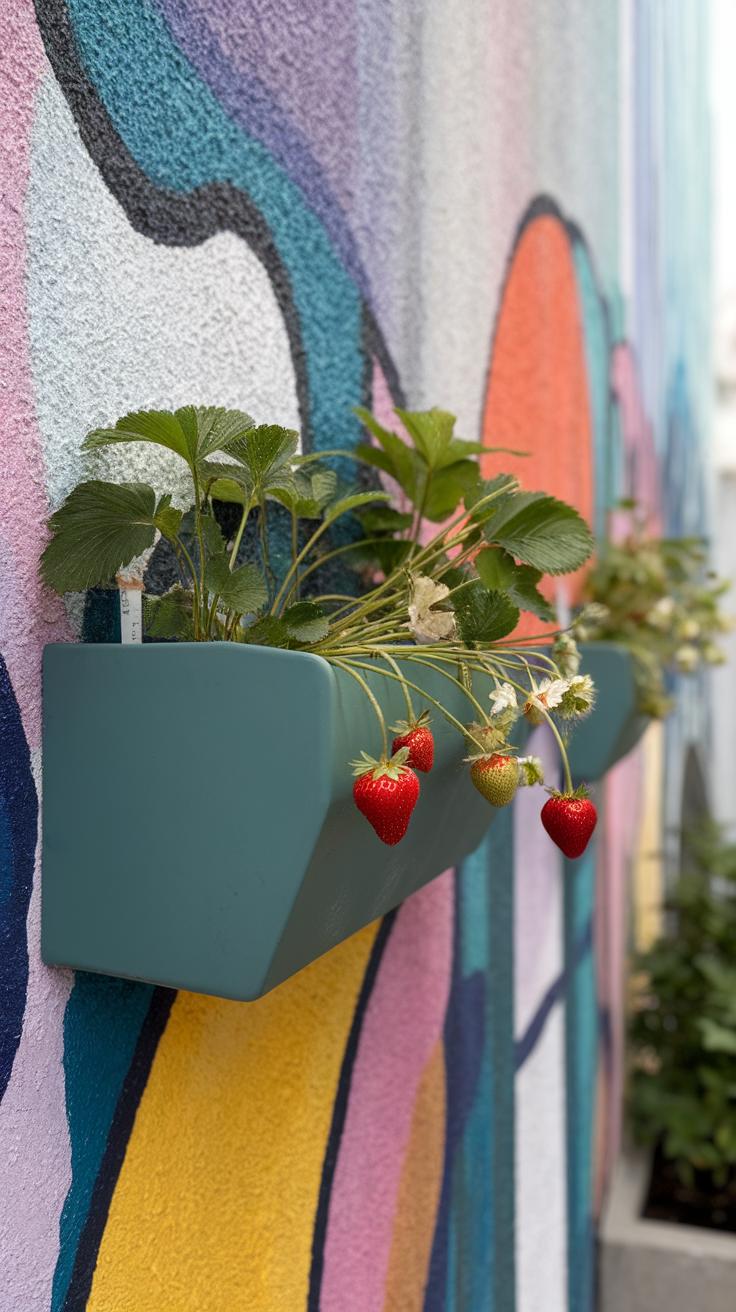
Vertical Growing Solutions
Wall gardens present an innovative approach to growing strawberries in a space-efficient manner. Utilizing vertical space optimizes sunlight exposure while reducing the need for traditional ground plots. A wall-mounted planter allows strawberries to thrive in a structured environment, providing essential drainage and air circulation. These planters can be crafted from various materials such as wood, metal, or recycled plastics, which enhance visual appeal while serving functional purposes.
Incorporating a drip irrigation system within a wall garden can ensure consistent moisture levels, crucial for strawberry production. This technique minimizes water waste and helps prevent root rot by efficiently directing moisture to the plants. Additionally, wall gardens can be placed in sunny areas, making them ideal for cultivating strawberries that require ample sunlight to flourish, ultimately leading to bountiful harvests with minimal space use.
Companion Planting with Strawberries Enhancing Growth and Pest Control
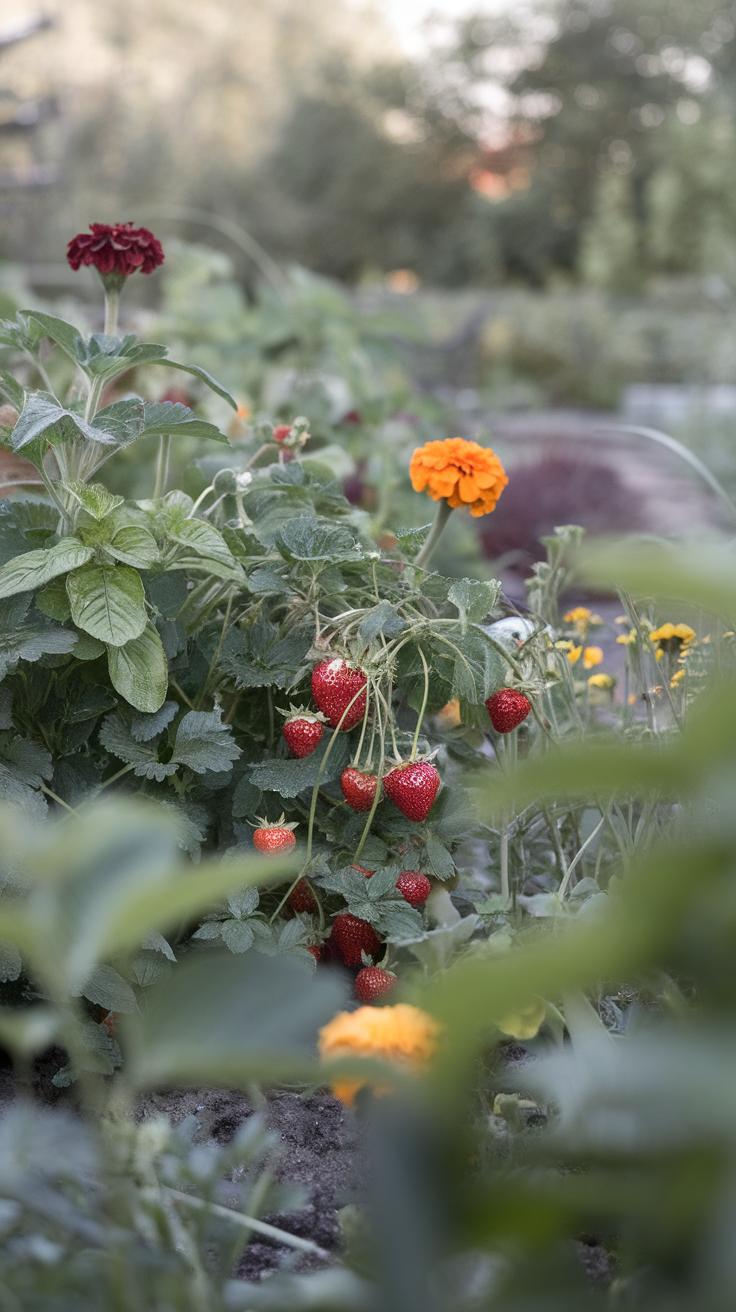
Benefits of Companion Planting Alongside Strawberries
Companion planting is an effective method to promote healthy strawberry growth while naturally managing pests. Certain plants, such as marigolds, can deter harmful insects like aphids and beetles. Not only do these flowers add a burst of color to the garden, but they also create a more balanced ecosystem, allowing strawberries to thrive without chemical interventions.
Herbs like basil and thyme work synergistically with strawberries by attracting beneficial insects that prey on common pests. These aromatic plants can improve the flavor of strawberries, creating a delightful combination on your plate. Planting nitrogen-fixing legumes, such as beans, near strawberry plants enriches the soil, contributing to healthier root systems and more abundant fruit production.
Seasonal Care for Strawberry Plants
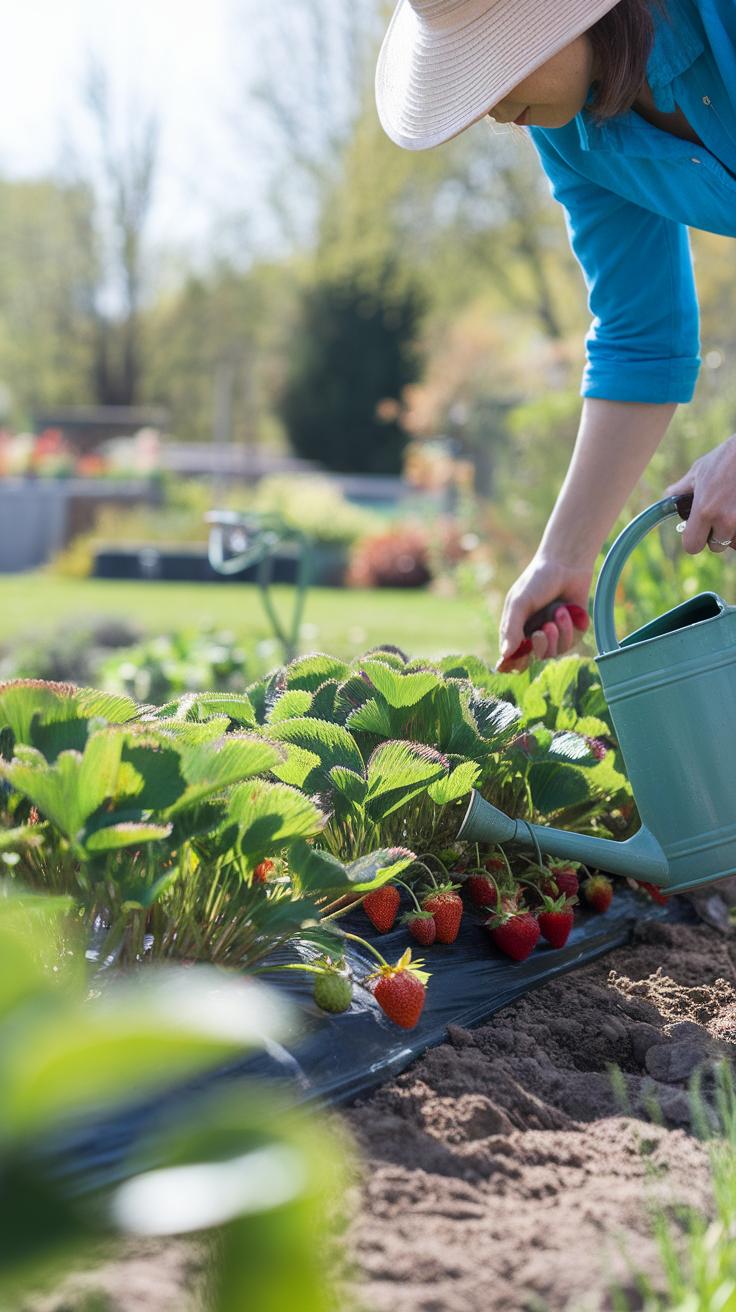
Year-Round Maintenance Strategies
Maintaining health and productivity in strawberry plants requires tailored strategies throughout the seasons. Spring is the ideal time to prepare for planting; incorporate organic matter into the soil and ensure thorough watering. Monitoring for pests, particularly aphids, is essential as they can compromise young plants. During summer, focus on mulching to retain soil moisture and protect fruits from rot. Regular harvesting encourages continual fruiting, which maximizes yield.
Autumn and Winter Care Techniques
As the growing season winds down in autumn, it’s crucial to clean up any fallen debris to minimize disease risk. Apply a nitrogen-rich fertilizer to encourage root growth before winter. For colder climates, a protective layer of straw helps insulate strawberry plants during freezing temperatures. In winter, while growth slows significantly, check for pests or diseases beneath the protective layer and address any issues promptly, ensuring a vibrant start to the upcoming season.
Common Challenges in Strawberry Cultivation Pests and Diseases
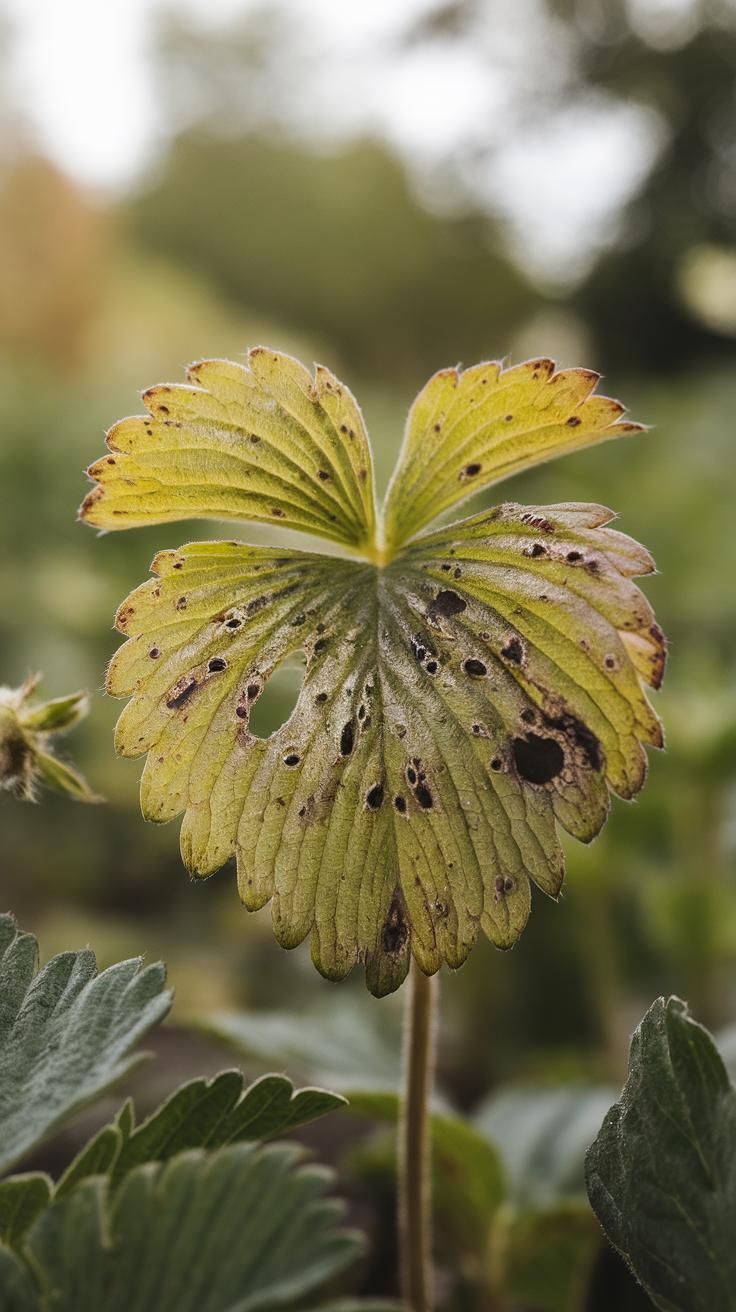
Identifying Common Pests
Growing strawberries can be rewarding, yet it comes with its own set of challenges, particularly regarding pests. Aphids, spider mites, and slugs frequently target strawberry plants, leading to reduced yields and compromised quality. Early detection is vital; observing yellowing leaves and stunted growth can indicate a pest presence. Regularly inspecting the undersides of leaves helps reduce infestation and ensures a healthy harvest.
Preventing and Managing Diseases
Diseases also pose significant hurdles in strawberry cultivation, with fungal infections such as gray mold and powdery mildew being prevalent. Proper spacing and air circulation around plants can mitigate these issues, allowing the foliage to dry quickly after rain or dew. Employing organic fungicides along with traditional practices can help maintain plant health. Growers should remain vigilant throughout the growing season, employing integrated pest management strategies to cultivate not only delicious but resilient strawberries.
Harvesting and Enjoying Your Strawberries Timing and Techniques for Optimal Freshness
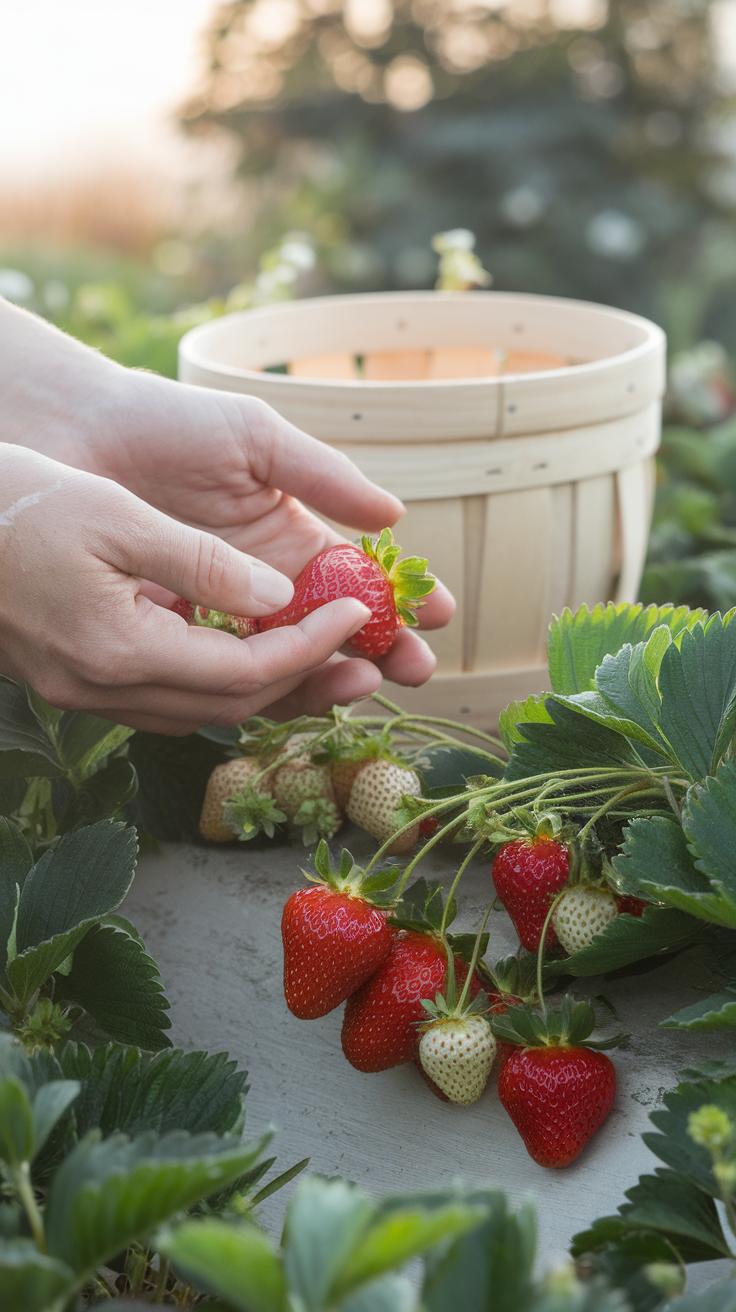
Knowing When to Harvest Strawberries
Determining the right time to harvest strawberries is crucial for experiencing their peak flavor. The best indicators are their color and firmness; ripe strawberries should be fully red, signaling that they have reached maturity. Time your harvest in the morning when temperatures are cooler, which helps preserve the fruit’s taste and sweetness. To enhance the experience, check for a slight fragrance, as aromatic strawberries tend to be the sweetest. Avoid picking fruit that is still green or has a dull color, as these will not develop the same flavor profile once detached from the plant.
Harvesting Techniques for Maximum Freshness
Utilizing proper harvesting techniques will further safeguard the quality of your strawberries. Gently twist or cut the stem about an inch above the berry to prevent damaging the fruit or the plant. This practice minimizes bruising and maintains the structure of the berries, allowing them to last longer post-harvest. Sort your harvest immediately, placing the best berries aside for eating or preserving. After harvesting, rinse the strawberries with cool water to remove any dirt before storing them in a cool place, ideally in a single layer, to keep them fresh and ready to enjoy.
Conclusions
Cultivating strawberries using innovative planter designs can greatly enhance both your gardening experience and yield. Employing creative methods such as vertical gardening, tiered planters, and container gardens not only optimizes space but also promotes healthy plant growth. By adapting to the unique needs of strawberries, you can enjoy a bountiful harvest while transforming your garden into a visually appealing retreat.
Adopting various strawberry planter ideas allows you to customize your gardening approach according to your space, preferences, and lifestyle. Embrace these fresh concepts and elevate your strawberry-growing journey. With dedication and creativity, you can enjoy a fruitful and fulfilling gardening experience.


